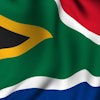
There are many practices that can be done on poultry farms to control the incidence of pathogens like Salmonella and Campylobacter, including having clean pipes and quality water running through them.
Manpreet Singh, professor and extension food safety specialist, University of Georgia, discussed that importance on January 30 at the International Production & Processing Expo (IPPE) in Atlanta, Georgia.
Problems with hard water and biofilms
Singh said hard water can create problems with pathogens on the farm.
With water hardness comes the issue of particles in the water and corrosion on the water lines.
“This harbors sites for all types of bacteria in them. Slowly but surely, they are getting released in the water line, and they’re slowly inoculating the birds, over and over and over again. … It’s kind of working against your feed additives. It’s working against anything you are trying to do,” said Singh.
It is important to understanding water quality from a hardness perspective, Singh said, because hard water can increase biofilm buildup.
“What are biofilms? Biofilms basically are a whole bunch of different layers of bacteria, slowly released over time,” he said.
Water line maintenance and design
A common response Singh said he usually hears to the question of how to eliminate biofilms is grinding the lines. He advises against grinding, because that really doesn’t get rid of the problem in the long term.
“By the time you grind a stainless steel surface, you might as well buy a new piece of replacement and put it in there. That’s how difficult biofilms are to remove from the system,” he said.
Singh knows that replacing pipes is expensive, but he added that when grinding pipes to the level that biofilms are gone, the pipes can become so thin “that basically there’s perforations in them.”
Sanitizing lines frequently is a better option, and he said if there is any area that isn’t clean, there will continue to be some kind of buildup.
Singh also advises against welding pipes. Even if you think you “are the best welder in the world,” Signh says welds will leave behind increased surface area to which biofilms can attach.
He also recommends a water line design that includes rounded curves, rather than angles, as buildup can occur more easily in corners.

















